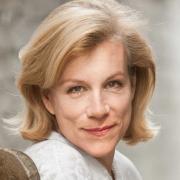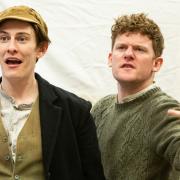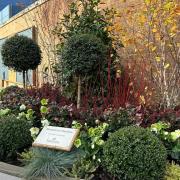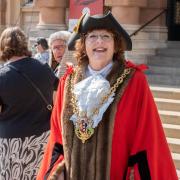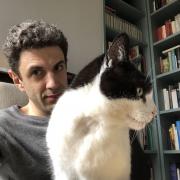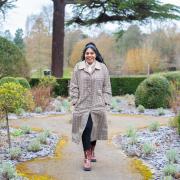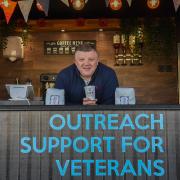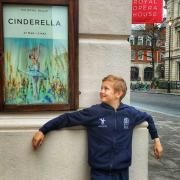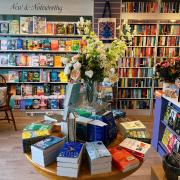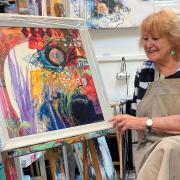In March 2020, townie David Wallace found himself unexpectedly living in the Suffolk village of Lindsey when he fell for its rural charms and hidden history. Now he has co-authored a book about the village
Tokyo, Saturday October 5, 2019. My wife Kasumi and I are travelling fast by public transport towards the National Stadium where in less than an hour England will play their second match of the Rugby World Cup against Argentina. We have tickets for the game.
Since retirement, we have split our lives between living in London and Tokyo, Kasumi’s birthplace, where her elderly mother still lives. Just short of the left turn to the stadium, we fork right, and the vehicle continues for a couple of minutes before pulling up in front of a large grey building where two men carry me out of the back of it. On a stretcher. This public transport was an ambulance.
We won’t be going to the game. Instead, I will be spending the next six weeks seriously ill in Keio University Hospital. A freak illness that resulted from a shingles injection which went wrong not only gave me shingles but also led to meningitis and myelitis, serious conditions affecting the central nervous system. Before any anti-vaxxers start quoting me as a case study, they should know that so rare was this side effect, the vaccine producers list the chances of it happening as less than one in a million. My bad luck!


After I left hospital, it took me until February to fully recover. I remember it because just as I was getting better a ship load of people in the nearby port of Yokohama were getting sick. The Diamond Princess had docked. 712 passengers and crew were ill. Covid had arrived. We decided to leave Japan a month early in case travel restrictions were applied and we got stuck in Tokyo. We left for London on March 13. As soon as we arrived, we realised that there was a very different response to Covid from the cautious approach prevailing in Japan. Streets were still busy with shoppers, pubs and restaurants were crowded, buses and trains were full. Nobody wore a face-covering or kept their distance.
I am diabetic and my immune system was further compromised by my recent illness. Kassie and I agreed that London was not where we wanted to be and decided we would try to move to the countryside to see out the pandemic which, like many others at the time, we assumed would last just a few weeks.
On March 21 (two days before the first lockdown) we arrived in the village of Lindsey in mid-South Suffolk – close to the historic market towns of Hadleigh and Lavenham. We were there courtesy of our close friends, David and Kathryn Ross, who live in Lindsey. Kathryn had found us a delightful holiday cottage next to The Old Rectory and our new life in the country began. What a contrast. Tokyo – population 13.9million, estimated population density 6,294 people per square kilometre. Lindsey – population 160, estimated population density 50 people per square kilometre.

For Kassie and I country living was a new experience. She was born and bred in Tokyo and moved to London for work in 1985. I had lived in London since graduating in 1975. We married in 1989 and had lived in central London ever since. Once we had settled in, I was keen to explore our new territory. I’ve always enjoyed walking and each day would set forth in a different direction to discover the terrain. I bought a pair of binoculars and an RSPB book and started to try to identify the birds. I particularly enjoyed my visits to Semer Wood where, in early summer mornings, I would see buzzards circling over the treetops.

I dug out my old Canon camera and as I traipsed across the surrounding fields, taking pictures of the changing colours as the wheat turned from green to gold and the field beans from green to black. As summer progressed, the wildflowers, planted by the farmers to encourage biodiversity, blossomed. One day I counted eight species of butterfly in a 50-yard stretch of field perimeter.
Our kindly hosts from The Old Rectory dug us a vegetable patch at the back of the cottage and we grew tomatoes, courgettes, runner beans and a variety of herbs. We picked wild blackberries from the bushes next to our home. I rekindled my cooking skills and we divided the meals between us, Kasumi cooking lunch while I did dinner. Soon we were eating meals sourced almost entirely locally – either from the farm shop or our own efforts. Gradually we acclimatised from city dwellers to country folk and were beginning to love our new lives.
The country went in and out of lockdown, a fact almost unnoticed by us as we had chosen a life of self-imposed isolation. After six months, I had accumulated many photographs of the village, the wildlife and the agriculture. The great thing about digital cameras is that amongst the dross there are normally one or two good images. I compiled a photobook of our new lives and contrasted it with the previous half-year in Japan, and produced 25 copies which we gave to family and friends at Christmas.

Amongst the recipients was David Ross, our friend in the village, who asked if we might work on a similar publication about Lindsey’s 700-year-old church, St Peter’s. David is a member of the parish church council and of the Friends of St Peter’s, a group of local volunteers dedicated to its upkeep and maintenance. A church is nothing without the community that it serves, and for some in the community, their lives would be diminished without the church at its heart. Nowadays, St Peter’s, in common with many other churches, has smaller congregations, but it still plays an important role in village life. Many who never attend a service will have been to a wedding or baptism there. Some will, at the end of their lives, be buried in its pretty graveyard. Others, regardless of their faith, consider it a place for quiet contemplation – and I’m one of them.
David and I decided to produce a guide to the church which encapsulated the enduring connection between church, village and community. For six months from the summer of 2021, we embarked on an amazing voyage of discovery into our small village. We grew to understand more about our village forebears – about the 12th century adulterine castle built during the civil war between King Stephen and his cousin Matilda; about the wealth the wool trade brought the area until Henry VIII put an end to it with his wars in Europe where much of the cloth was exported. And we learnt, through Harry Buckledee’s fascinating account, what life was like in the village in the 1920s.

We also learnt about modern farming techniques and how our generation of Lindsey farmers are at the forefront of optimising the balance between environment and the needs of food production. We also learnt much about the history of St Peter’s; how Lindsey residents of the 17th century were amongst the founding fathers of America where, perhaps driven by nostalgia, they gave Suffolk names to the villages of New England - Lindsey, Boxford, Kersey and Groton amongst them. We researched how the priests of the 13th and 14th centuries would use a primitive form of sundial built into the south-facing wall of the church to inform the villagers when a mass would start.

David and I have now put all that we have learnt, together with photos and illustrations, into our guide to the village and the church, Lindsey through the ages. Perhaps what we have learnt on this journey more than anything is that it is the duty of our generation to preserve this church building so that future generations may benefit from its serene presence. Between us, we have written and paid for the booklet so that every penny raised from sales can go towards the honouring of that duty.
The wheel turns full circle. The writing of this article in February 2022 is almost my last task before Kasumi and I fly back to Tokyo for the first time in two years. It’s been long enough to change deeply held mindsets and we have decided, when we next return, to sell our London flat and make our UK base in Suffolk. Townies no more!
Lindsey through the ages is available for a donation of £10 at St Peter’s Church and also at Hollow Trees Farm Shop. The booklet can also be obtained by making a donation (minimum £10) to the Just Giving page. justgiving.com/crowdfunding/lindseystpeters
When making a Just Giving donation, please identify yourself and your donation in the list of supporters, then email the same identity and your address to David Wallace at david@repgr.com so he can send you a copy.




